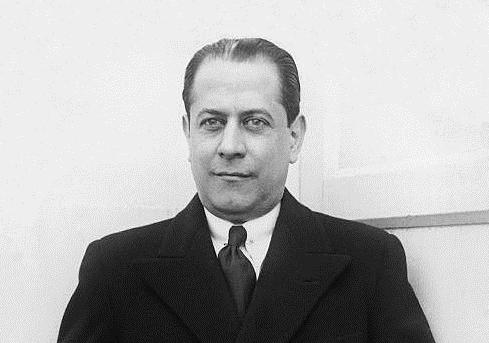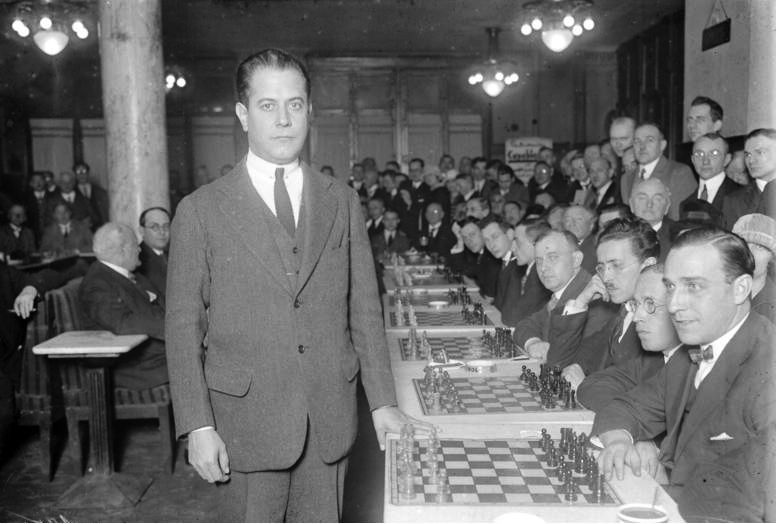
Have You Seen These 2 Amazing Capablanca Games?
The games played by Jose Raul Capablanca have been analyzed in countless chess books, magazines and videos.
Today, I want to show you two of his less famous games. Both were played against the strong American master Alexander Kevitz, and both deserve to be called amazing even if for different reasons.
The first game is truly unbelievable, but unfortunately it is an unbelievably bad game. In fact, I think it is the worst game Capablanca ever played after he learned the rules of chess at the tender age of four!
Judge for yourself:
Yes, I know this was a 33-board simul, but it was also the world champion playing White for goodness sake! I think that even a USCF 1200 would have been ashamed of himself if he had he played like this! I have no idea what happened there, so this game is one of the biggest chess mysteries to me.
The next time Capablanca played Kevitz was a serious tournament game, yet its beginning reminded me of that old simul game:
Yes, Capablanca, the guy who was called a chess machine for his flawless play, just blundered a pawn in a perfectly fine position right after the opening was over! Was it "deja vu all over again," as Yogi Berra might say, since in the old simul game Capablanca's troubles started when he blundered a pawn as early as move five?
Fortunately, now we are going to witness the amazing part of the game.
Can you imagine a strong master playing White and losing the game almost without any visible mistake? And yet, this is exactly what happened here!

Capablanca giving a simultaneous display on 30 boards in Berlin, June 1929. Image and caption via Wikipedia.
Starting from this point the game is an excellent example of playing in a bad position. In situations like this you need to remember that your only chance to survive is your opponent making mistakes, even they are just small ones. Therefore your goal is to help him to do it!
The best way to induce your opponent's mistakes is to make him uncomfortable. If you can attack his king then by all means do, it or if you have a passed pawn then push it forward! However, sometimes you don't have any real counterplay, just like in this position from Capablanca's game, so what should you do then?
In this case try to make your pieces annoying for your opponent, or at least make them look annoying! Try to guess Capablanca's next two moves, which help him to achieve this goal.
You see, the queen on a3 is very annoying for White as it puts pressure on the a2 pawn and also prevents White from reclaiming the c-file by playing Rac1. Of course Black's position is still bad, but at least White starts experiencing some discomfort here.
Now try to guess Capablanca's next move:
You see, unlike many players who start doing something obviously desperate and bad whenever they get into a bad position, Capablanca just plays chess. The knight on e3 was preventing Black's rook on c8 from getting to the second rank and also was going to jump to d5 at the right moment, so Capablanca trades it!
Please notice that after Black blundered his central pawn he initiated a trade of three pairs of minor pieces. It is just opposite of what most chess players would do since we learn pretty early that trades are good for the player who has a material advantage.
I've seen so many games by young chess players where whenever they win material they start chasing the opponent's pieces, hoping to trade. In this quest for trades they, as a rule, miss many favorable continuations since there is only one thought in their minds: trade!
Meanwhile, when you are up or down material it is just the same game of chess, so you should decide if you want to trade based on the requirements of that particular position. That's exactly what Capablanca did here.
His next step is to create some counterplay. Can you find how he achieved it?
By creating and fixing the weak a2 pawn, Capablanca assures long-term compensation for the lost pawn. Moreover, now he can even trade queens or rooks since the a2 pawn will become even weaker after such trades!
White tries to generate an attack on the kingside using his pawn majority there, but Capablanca is very precise. Can you find his moves in the following position?
Now Black is firmly in the driver's seat. Even though White could have still defended, a discouraged Alexander Kevitz loses the game almost instantly:
Quoting Yogi Berra again: "You can observe a lot by watching."
I hope that studying Capablanca's play after he blundered a pawn will help you to significantly improve your defensive skills!



